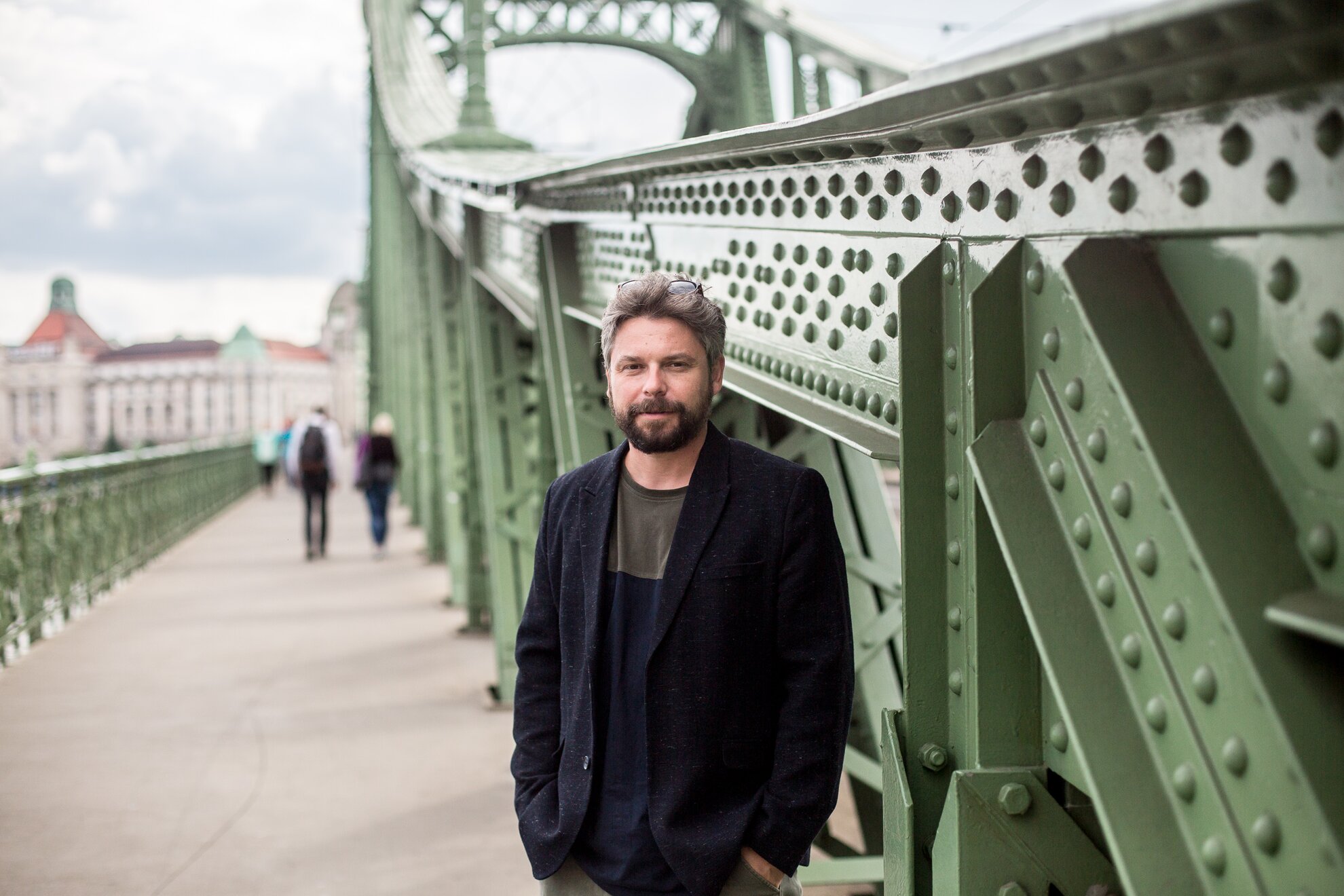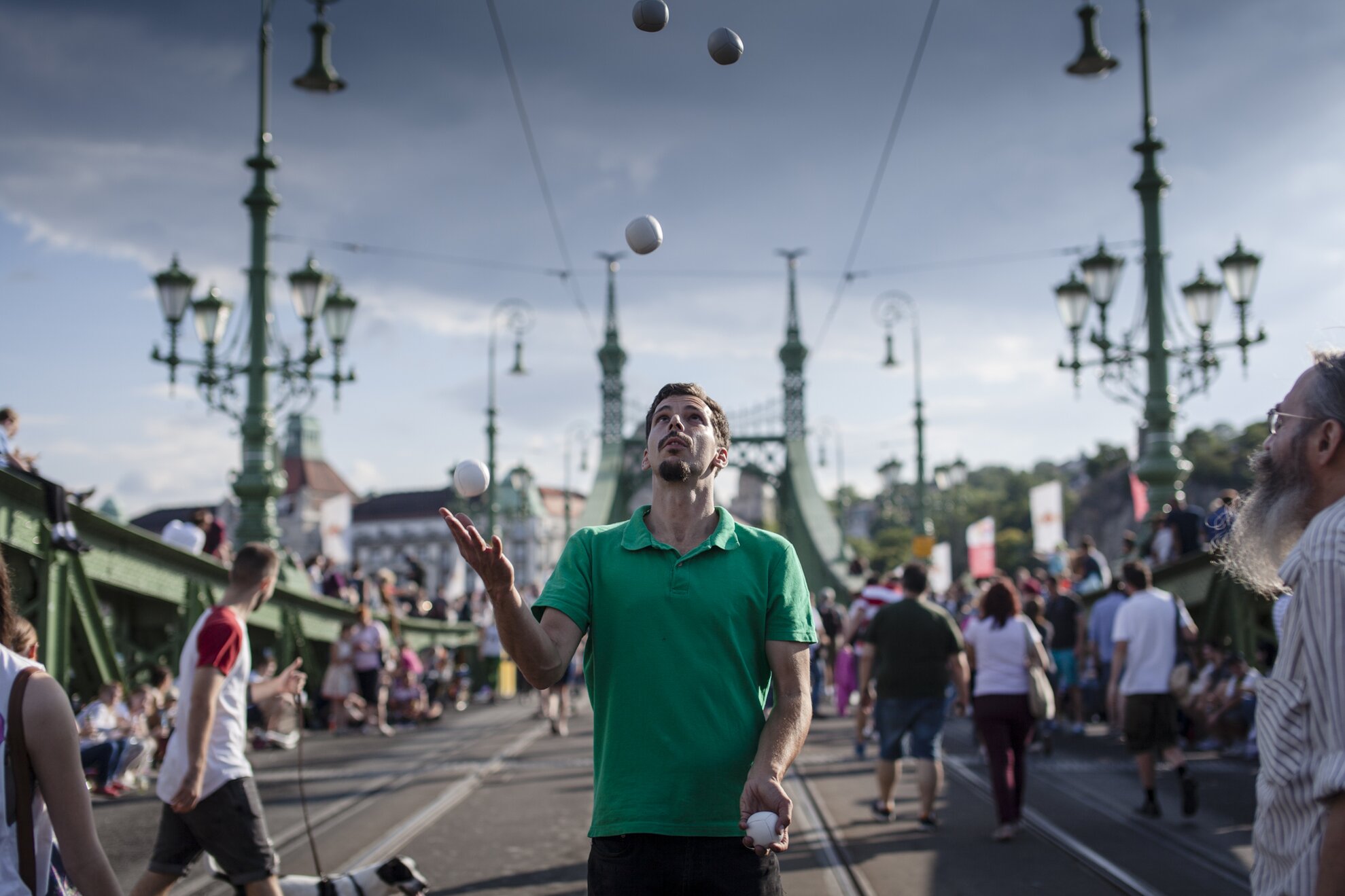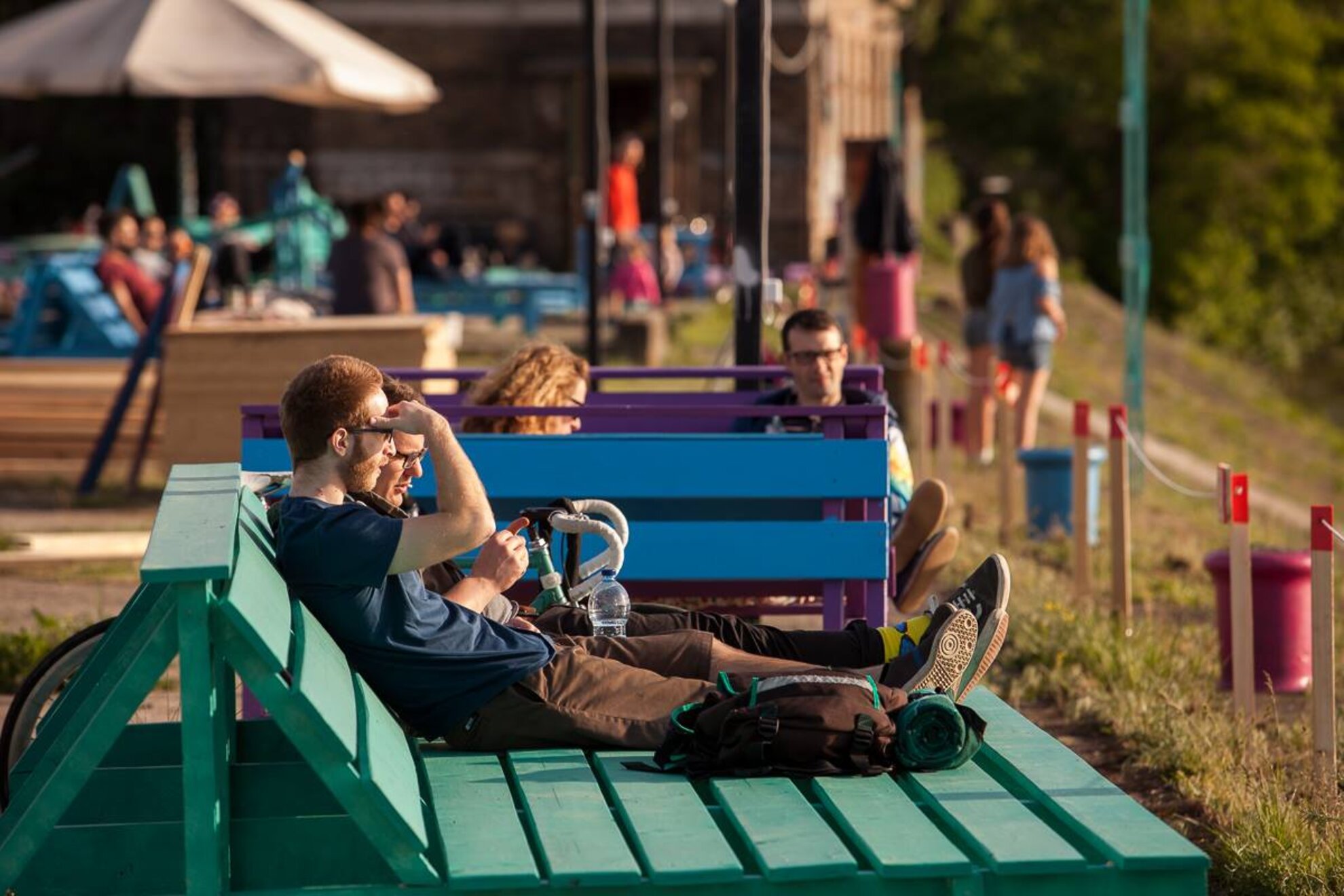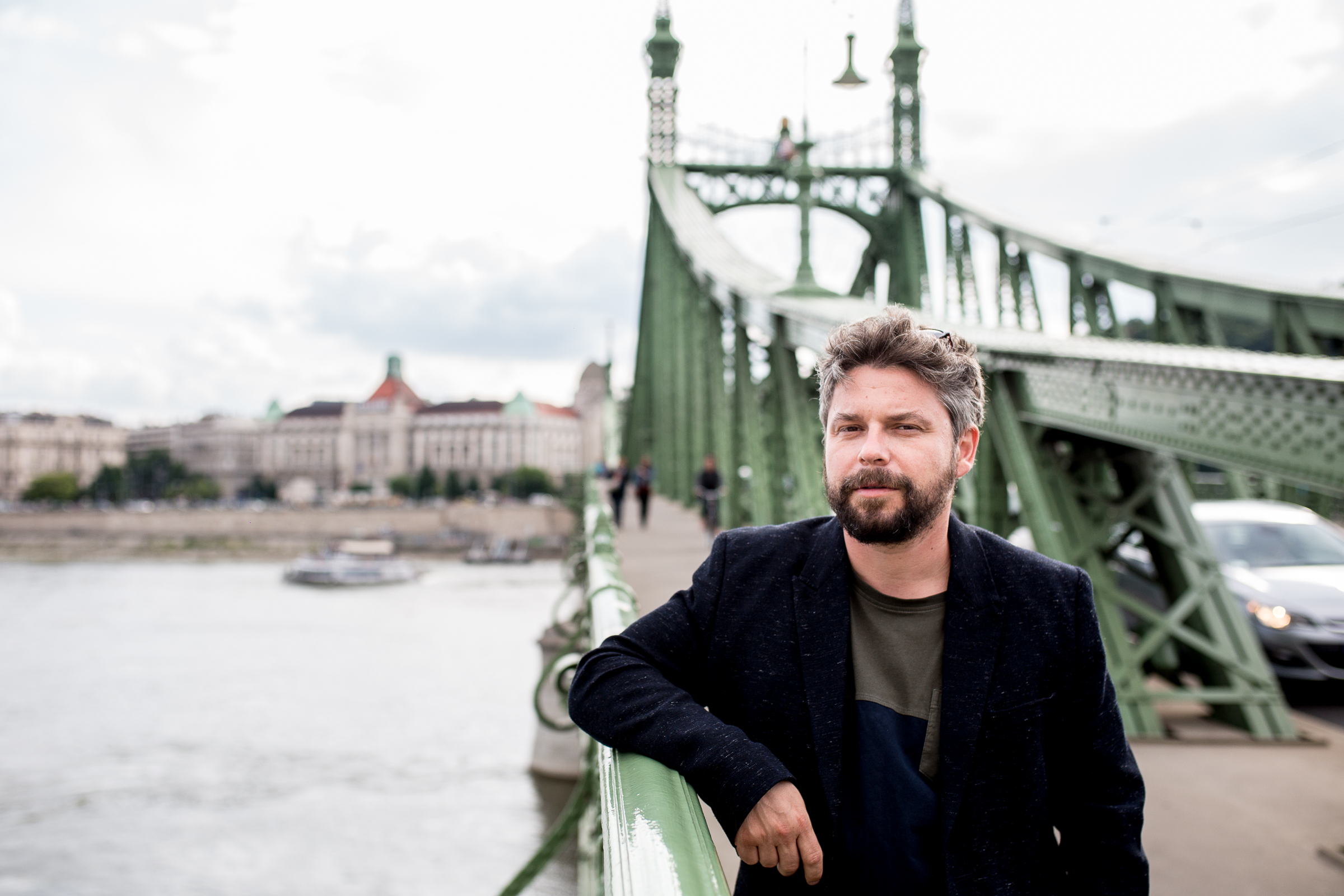We Love Budapest: Tell us about the beginning – how did the Valyo project start?
Miklós Tömör:“Valyo started eight years ago with the aim of integrating the river into the lives of locals and improving access to the Danube embankment. Our experiences were that even though Budapest has the enviable resource of a river running through it, it wasn’t really being exploited. Each of us was living in Budapest and working in urban planning; our plan was to show people spaces and how to turn them into something more. We started off with micro-transformations, like parking a sauna bus there or organising all kinds of events. Since the beginning, we have turned at least 50 places into waterside hotspots. And it seems to work – people and politicians are talking about it, there seems to be a change in how we think about and relate to the Danube embankment. We are still at the beginning of a longer process – but at least we have taken the first step.”

WLB: Why do you think it took so long for locals to discover the Danube embankment?
M.T.:“The reasons date back to the time when the Danube embankment was a place where ships could discharge their loads. Imagine these huge spaces on both sides of the river! When merchant vessels started to disappear, they were usurped by cars. Now there are busy roads along both Buda and Pest waterfronts, separating the river from the city – it’s quite hard to cross the road from one point to the other. Only a very narrow space is left between the road and the river, which can’t really be turned into a park or anything similar. But we think that those spots have to be inhabited again, and after that, we can start to claim back the river for the city. This could be very easily done on the Pest side – even building a relief road wouldn’t cause too much trouble. But the one on the Buda side is always crowded with cars, making the situation harder to solve. But people haven’t been thinking about these things for 30 years. Back in those days, people used to spend less time at public places – not just in Hungary, but everywhere in Europe. However, in more recent times, there has been shift in this tendency.”

WLB: You’ve said that places such as Liberty Bridge or the Római embankment aren’t simply riverside spaces, but they also function as a stage for democracy.
M.T.:“The places you mention are so prominent that they inevitably have some social importance. Because all kinds of people visit them, they became a stage for democracy. For example, when Liberty Bridge opened, literally everybody was there – from the poorest of locals to the richest, individuals on the right- and left-wing side of the political spectrum, and so on. And they could spend time together, or at least see each other. In Hungary, different classes are really separate from each other, an important fact to bear in mind. These spaces matter to everybody, so everyone goes there. Therefore, you can’t pigeonhole them into ’exclusive places’ or ’places where poor people go’. Another important thing is that, in our opinion, the best public places are those where you don’t feel the need to buy anything when staying there. You feel no pressure – not even emotional – to buy a beer or a coffee.”

WLB: Do you think that hangouts such as the A38 floating venue can help in the integration of the river into the lives of locals?
M.T.:“Absolutely. It’s good that there are venues such as the A38, there should be more like it by the river. Because places like this can draw our attention to the Danube and its embankment, how good is it to be there – and that’s how this opinion can start to spread. People see it, experience it and then a certain need starts to emerge. Of course, some will see financial opportunity, but that’s okay – after all, nothing is free. But it would be important to somehow set a limit, so that the shore won’t be overcrowded with places where you have to pay top dollar for everything.”

WLB: Tell us about your latest project, Kikötő.
M.T.:“Kikötő is an area of 1,000 square metres by Rákóczi Bridge, a former dock that was neglected for years. It’s another off-beat space, which is still easily accessible by public transport, and we try to highlight it through various cultural events. In the neighbourhood, Müpa and the National Theatre did the same thing ten years ago: they built two cultural centres in the middle of nowhere and soon, other buildings started to pop up around them. We’re aiming to do something similar but, of course, on a smaller scale. There will be concerts, screenings, lectures, workshops, exhibitions and so on. We try to showcase, how easy it is to turn an abandoned industrial hub into a great cultural space – and how good it feels to do so.”




